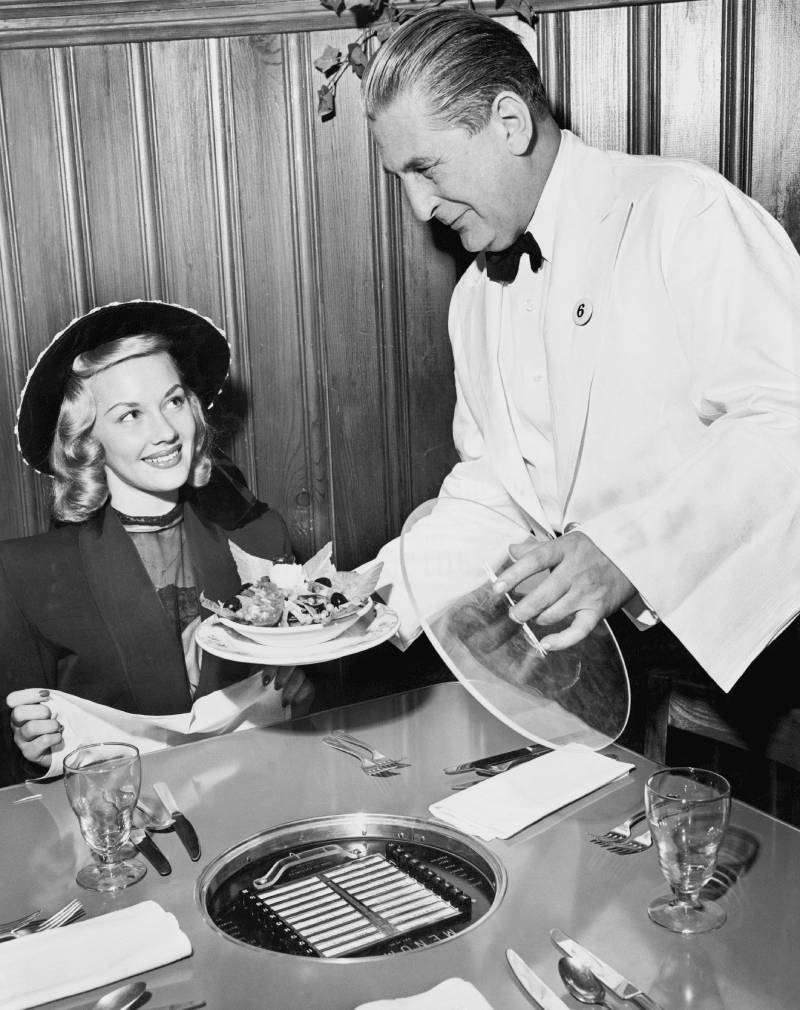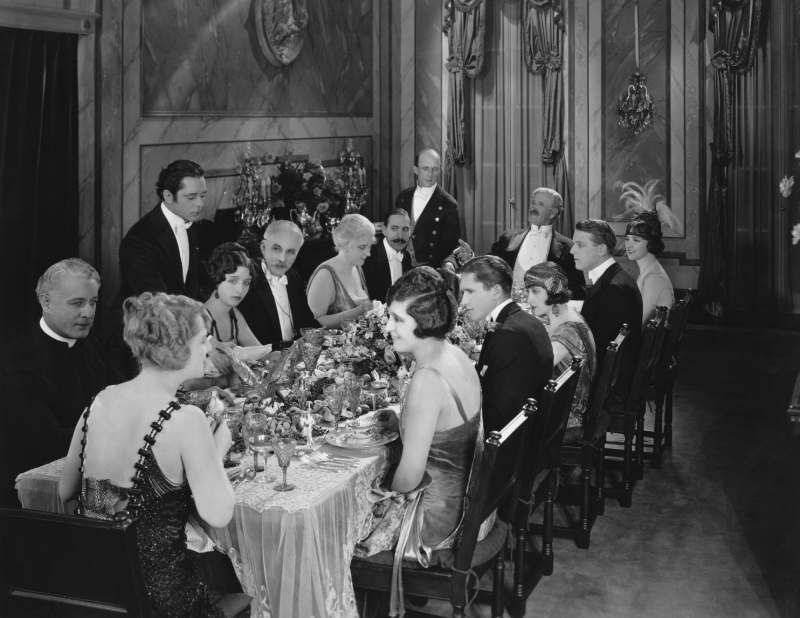
I remember when I had my own place.
I’d slipped the shackles of working for somebody else, and I could finally do things my way. No longer would I have to do anything that made me feel uncomfortable, or sleazy. I could get up each morning, and face the day with a big smile.
And sure, there were still a few creases to iron out of my operation, but I’d overcome that initial bumpy launch period and come out the other side swinging.
And then, everything kind of plateaued.
Don’t get me wrong, business was good, better than good on some days, but there was always that nagging feeling that things could be improved upon even more.
Perhaps it was merely a money thing, I felt that there was more to be made from each customer?
Or maybe it wasn’t my customer’s spend per head that was the issue, rather the need for more customers in general?
Something can be done about this, there has to be something!
Enter suggestive selling.
Now, I know what you’re thinking – I’m not in this business to bully my customers into spending their money on stuff they don’t want – and believe me, that’s not what I want either.
There is a way to achieve happiness on both sides.
With the right balance, your restaurant can increase its average spend-per-head, your customers will be happier, simply by following these simple tips:
- Upselling vs cross-selling: what’s the difference?
- How can I improve on my suggestive selling?
- How can I make suggestive selling part of our culture?
- Above all, believe in what you’re selling
Upselling vs cross-selling: what’s the difference?
“Would you like to supersize that?”
Boom, you’ve just been upsold.
There’s a bit more to it than that, but that’s basically upselling in a nutshell.
Upselling essentially involves selling more of the same, or similar, product for a seemingly reasonable amount. And when done well, it has the potential to increase your profit margins considerably.
Think about it, if you’re paying $10 for a medium-sized meal, and you’re offered the option of a large meal for an extra dollar, you’re probably going to take it (especially if you have the same levels of self-control as I do).
You’re selling to the customer’s stomach.
The kitchen won’t be too stretched to make the extra food, because they were already making some, now they just have to make a little bit more. It’s almost zero extra effort all around.
And if everybody in the place does this, depending on how many customers you serve each day, you’ve just increased your profits by thousands of dollars per year.
Now, cross-selling takes a little more finesse
This is where you can get creative, and where the extra spend per head can be significant.
You see, cross-selling is where you try to get the customer to order something that they weren’t thinking of ordering. The best example of this would be matching wines for certain dishes. The dish is perfectly fine without the wine (and vice-versa), but both would be enhanced by the other.
You’re essentially lending some of your expertise to the customer. It gives them a feeling of knowing something that the other diners don’t, and creates a special connection with your menu, exclusive to their new ‘insiders only’ club.
 You’re selling to the customer’s hearts.
You’re selling to the customer’s hearts.
And because it’s special, you can charge a lot more than you would for an upsell (however, if you do know of a place that does $1 matching wines, you should DM me immediately).
You won’t be getting as many bites on this particular worm, but if you do it right, you’ll get enough to see so many extra zeros on your yearly profits, it’ll look like binary code. (Well, maybe not that much, but you’ll make heaps more money!)
How can I improve on my suggestive selling?
There’s a couple of ways.
Firstly, for upselling, see which items on your menu already have the potential to scale up. These could range from sides, like fries and salads, to mains, like steak or seafood.
If the maximum effort you have to exert is adding a few more chips to the fryer, or moving your knife another couple of centimetres along a slab of meat to give a bigger cut, then there’s potential to upsell it.
Upselling your drinks menu
Another area ripe for an upselling overhaul is your drinks menu. I’ve found that drinks tend to upsell far easier than most other menu items. Maybe it’s that customers tend to over-indulge the more they’ve had, or that drinks are ordered multiple times throughout a sitting. When it comes to drinks, offering a large over a small tends to yield results more often than not. And for you, it’s as simple as buying bigger glasses, and then you’re set for life.
How about cross-selling?
For cross-selling, an investment in your staff is required.
Train them on your menu, and not just what’s on offer, but also why. If they know the reason for a particular dish being on the menu that night (it could be because a certain ingredient is in season, or today’s catch of seafood is particularly good), they’ll be a lot more comfortable talking your customers through the ordering process.
And let your staff eat the food. Please, for everybody’s sake.
 Don’t limit staff meals to a few odds & ends thrown together in a pan. If your floor staff know what the menu tastes like, they can sell it so much better. They could taste something nobody else did, or overcome their own prejudices, and start recommending more dishes instead of only what they thought they liked (I am forever apologetic to any asparagus dishes I shunned throughout my career).
Don’t limit staff meals to a few odds & ends thrown together in a pan. If your floor staff know what the menu tastes like, they can sell it so much better. They could taste something nobody else did, or overcome their own prejudices, and start recommending more dishes instead of only what they thought they liked (I am forever apologetic to any asparagus dishes I shunned throughout my career).
Of course, don’t serve them the $400 per kg A5 wagyu every shift, but at least let them try a piece, just once.
Connect with your customers via the art of conversation
Get your FOH team talking, to the customers, to the chefs, to you, to everybody, as long as it’s about the menu. The more they know, the more confident they’ll be.
The customer likes red wine but they’re not feeling like something too heavy? Pinot noir! Need something to compliment that awesome seafood haul you received earlier? Pinot grigio should do the trick (can you tell I adhere to the ‘when in doubt, offer some sort of pinot’ school of thought?).
If they talk to the chefs, they’ll know to push certain dishes, or hold off on others, depending on the quality of the ingredients.
“…a staff member who knows their Viogniet from their Fruity Lexia, will be a valuable asset to your growing business.”
And if they talk to you (or whomever the money person is in your restaurant), they’ll know which dishes they can push to make the most profits.
Plus, if they break down the barrier between themselves and the customers, there’s a higher chance of the customers spending more. I’m not saying they should put an arm around the customer’s shoulder and start talking about the glory days, but a little ice breaker here and there can work wonders.
Make your training memorable
Make sure your team has the best training available, and make it memorable.
Anybody can open their laptop and start Googling wine pairings (I should know, because I’ve literally just done it), but there’s a lot better ways to learn.
Talk to your suppliers, and see if you can organise an expert to come in one afternoon, and have a tasting with your whole team. Everybody gets to try a few different products, be it wine, or cheese, or meat, or fish, and they can learn first hand what they’re supposed to be looking for in a quality ingredient, or a good glass of claret.
In short, suggestive selling can be a delicate dance, but a staff member who knows their Viogniet from their Fruity Lexia, will be a valuable asset to your growing business.
How can I make suggestive selling part of our culture?
A good start is by harnessing the potential of your POS system.
Lightspeed POS has the ability to add modifiers to any menu item. But what does this mean? Simply put, this means that once you’ve decided which items you’d like to upsell, or cross-sell, you can add a prompt that will ask your floor staff whether they would like a certain option.
That could be a large or a regular-sized salad. Or it could be whether or not the customer would like to add the matching wines to their meal.
It takes away any of the awkwardness from having to actively sell to your customers, by making it part of the process in a very non-intrusive way. It also means that the options are in the most convenient spot in your POS, so you won’t have to go searching through screen after screen to find them.
Digital menus can help with the suggestive sell
Things get even easier, when you incorporate digital menus into your restaurant.
I know having a physical menu is something that can be used to convey the quality of your offerings (hello, wonderful 350 gsm card), but there’s nothing stopping you from at least having a hybrid setup.
Sure, give them the physical menus to start with, but have a QR code on the table if they want to order extra drinks, or a couple more sides throughout their stay.
Not only will your staff have more free time to focus on the customers that need their help, but food will come out quicker due to a more streamlined workflow, you can also gather more information on your customers such as average spend per head, and frequency of visits.
But above all, customers that order via a QR code tend to spend an average of 25% more than those who didn’t. And if that’s not enough to convince you, then I’ll eat my hat (of which I have many #baldlife).
In short, you don’t have to overthink your suggestions, you can increase your customer’s average spend, and the ordering process can flow as smoothly as a prime Kenny G.
Above all, believe in what you’re selling
I know that suggestive selling can be viewed as a dark art sometimes, especially by the people on the front line doing all of the selling.
But everybody needs a little nudge in the right direction once in a while, and you know you’re no snake oil salesman. At the end of the day, the customer will be happy with what you’re trying to sell them – take solace in that knowledge.
After all, you both want the same outcome from their visit – you both want to come away with the win.

News you care about. Tips you can use.
Everything your business needs to grow, delivered straight to your inbox.


